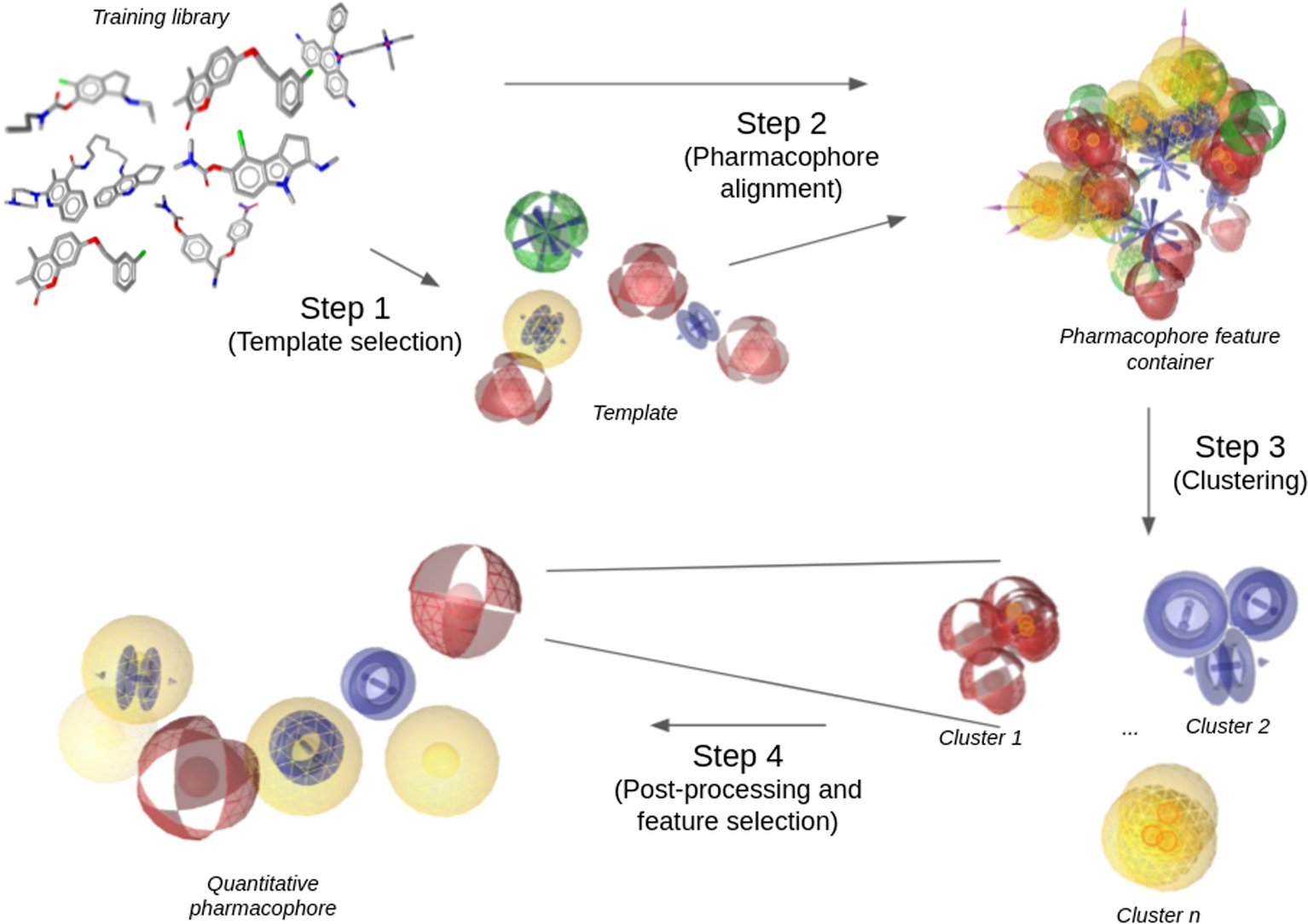QPHAR: quantitative pharmacophore activity relationship: method and validation
Kohlbacher, S.M., Langer, T. & Seidel, T.
J Cheminform 13, 57 (2021).
https://doi.org/10.1186/s13321-021-00537-9 (PDF Version)
Abstract
QSAR methods are widely applied in the drug discovery process, both in the hit‐to‐lead and lead optimization phase, as well as in the drug-approval process. Most QSAR algorithms are limited to using molecules as input and disregard pharmacophores or pharmacophoric features entirely. However, due to the high level of abstraction, pharmacophore representations provide some advantageous properties for building quantitative SAR models. The abstract depiction of molecular interactions avoids a bias towards overrepresented functional groups in small datasets. Furthermore, a well‐crafted quantitative pharmacophore model can generalise to underrepresented or even missing molecular features in the training set by using pharmacophoric interaction patterns only. This paper presents a novel method to construct quantitative pharmacophore models and demonstrates its applicability and robustness on more than 250 diverse datasets. Fivefold cross-validation on these datasets with default settings yielded an average RMSE of 0.62, with an average standard deviation of 0.18. Additional cross-validation studies on datasets with 15–20 training samples showed that robust quantitative pharmacophore models could be obtained. These low requirements for dataset sizes render quantitative pharmacophores a viable go-tomethod for medicinal chemists, especially in the lead-optimisation stage of drug discovery projects.

Schema of generating the quantitative pharmacophore model
Rights and Permission
Open Access This article is licensed under a Creative Commons Attribution 4.0 International License, which permits use, sharing, adaptation, distribution and reproduction in any medium or format, as long as you give appropriate credit to the original author(s) and the source, provide a link to the Creative Commons licence, and indicate if changes were made. The images or other third party material in this article are included in the article’s Creative Commons licence, unless indicated otherwise in a credit line to the material. If material is not included in the article’s Creative Commons licence and your intended use is not permitted by statutory regulation or exceeds the permitted use, you will need to obtain permission directly from the copyright holder. To view a copy of this licence, visit http://creativecommons.org/licenses/by/4.0/. The Creative Commons Public Domain Dedication waiver (http://creativecommons.org/publicdomain/zero/1.0/) applies to the data made available in this article, unless otherwise stated in a credit line to the data.
Keywords
Pharmacophore, QSAR, Regression, Machine learning, Quantitative-pharmacophore-model

